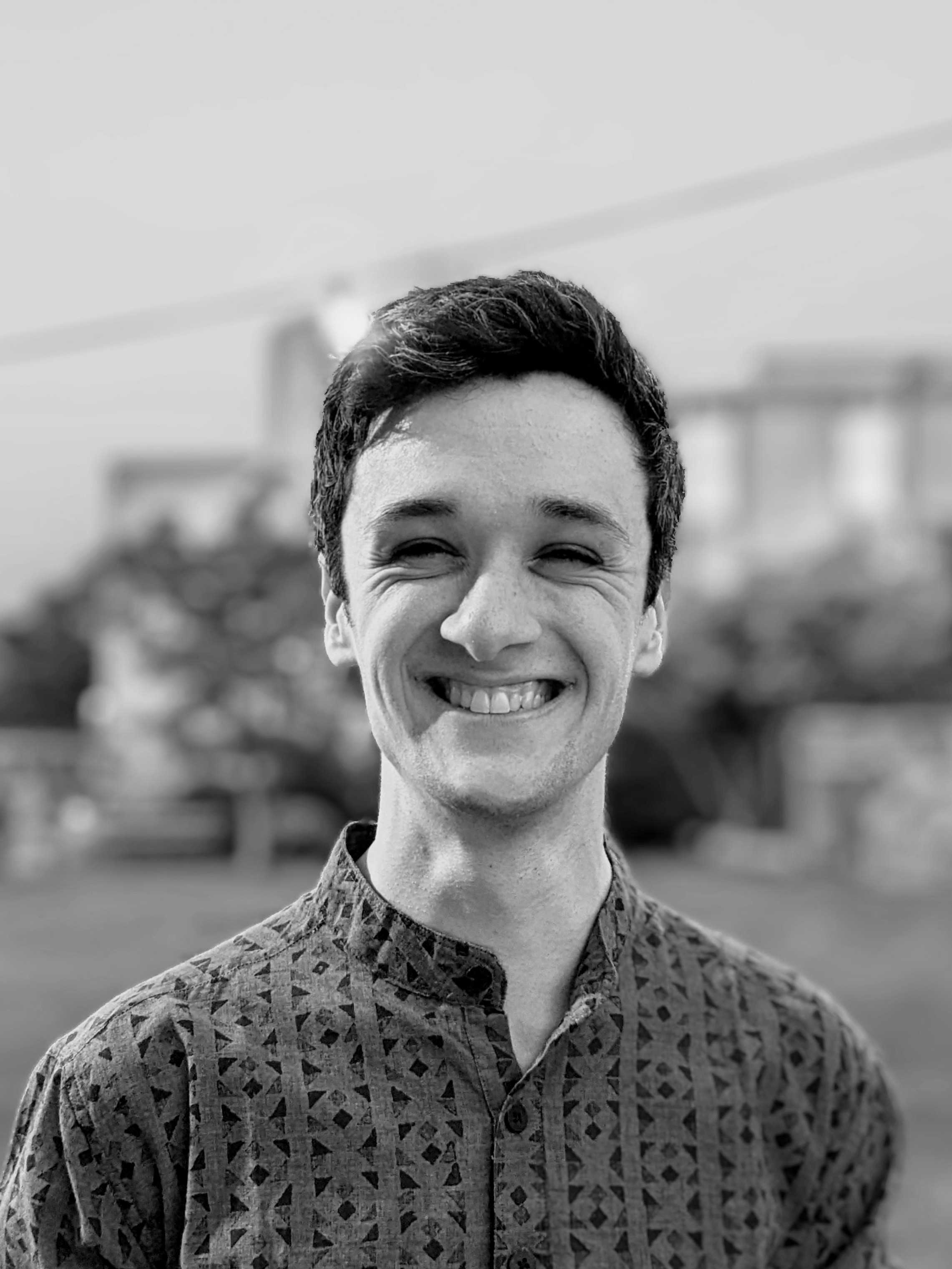That's a wrap for SAS Innovate 2025, with the formal proceedings of the event having all but drawn to a close. You can still catch up on everything as it happened at the event below, with our beat-by-beat record of the announcements available in chronological order.
You can also find ITPro's comprehensive coverage from the event here:
- SAS wants its AI agents to supercharge workers, not replace them
- SAS leans on synthetic data and digital twins to support business data demand
- SAS thinks quantum AI has huge enterprise potential – here's why
- “Public trust has become the new currency for AI innovation”: Why SAS is ringing the alarm bell on AI governance for enterprises
- SAS Innovate 2025 live: All the updates from day two
- What to watch out for at SAS Innovate 2025
Hello from Orlando, where the sun is not yet in the sky. While we wait for the conference proper to get underway, why not read ITPro's analysis of the biggest talking points at SAS Innovate 2025.
It's bright and early in Orlando and attendees are gearing up for the day-one general session. Based on the products and demos on show in the expo hall, we're expecting to hear lots about AI in SAS Viya and doubtless some customer testimonies for how SAS has benefited their business.
On that note, assembled media were last night shown around the Orlando Magic Kia Center, the practice and exercise space for the Orlando Magic NBA team.
We were told how Orlando Magic has worked with SAS to improve customer outreach, processing game data to deliver targeted emails to fans. The same partnership has also improved ticket revenue by giving season ticket holders an easy way to let Orlando Magic sell their tickets if they can't attend a game, in return for virtual credit.

Just under ten minutes to go until the day-one keynote begins. As one would expect, we'll hear from Jim Goodnight, CEO at SAS.
But a little more unusually, we're also expecting a virtual address from Satya Nadella, CEO at Microsoft. We'll bring you that as it happens.
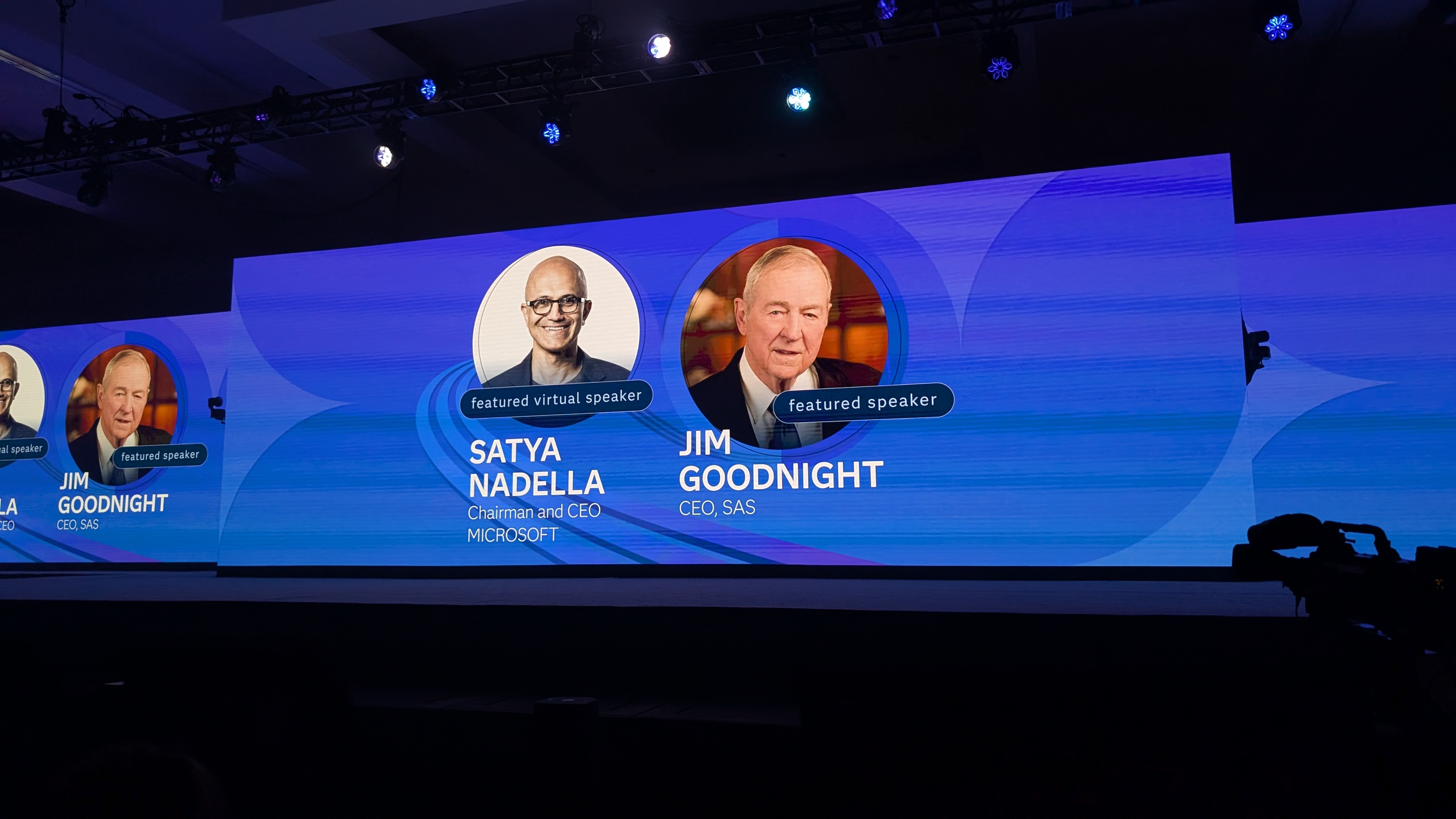
And we're off, with an opening welcome from Dominque Moon, customer success manager at SAS.
Moon says attendees can expect news on groundbreaking technology and thought provoking hands-on opportunities, as well as "lots and lots of fun surprises".
To begin with, we're told, we'll have a keynote from Bryan Harris, CTO at SAS, looking at the specific outcomes that SAS' technology can unlock.
Next, we'll have a series of speakers running us through the newest announcements from SAS – more on those as they come. Rounding it out, we can expect to hear from Frank Abagnale, of Catch Me If You Can fame, on how we can tackle fraud.
We're now off in earnest, with a sizzle reel beginning with a word from Goodnight, who stresses that organizations have more data to handle than ever before.
Harris has now taken to the stage. He begins by noting SAS is nearing its 50th anniversary and has achieved a lot along the way – billions of lines of code, its own programming language, and many generations of technology.
The latest innovation, Harris says, is AI and this can be harnessed with decision intelligence from SAS. This, he says, can cut through the difficulties and confusion associated with adopting AI.
"It really feels like all you need to do is sprinkle a little generative AI in your enterprise and all your problems will magically disappear," he says.
"Can you feel it?" he asks the audience, to laughter.
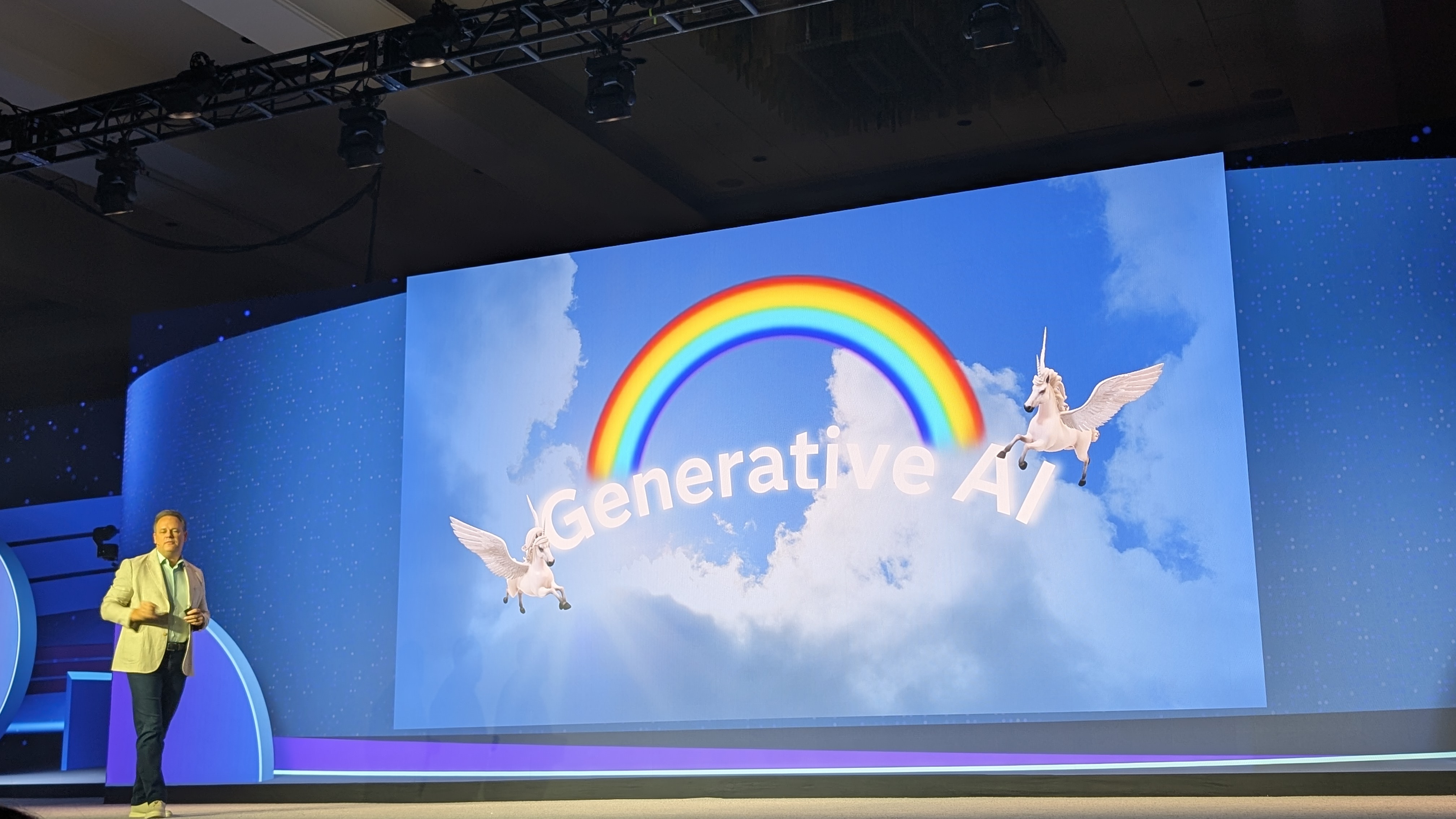
Harris says generative AI is a powerful technology but comes with limitations. For example, he cites a recent study which found that LLMs recommend more denials and higher interest rates for black applicants than identical white applicants. Harris notes this systemic issue was found in models from OpenAI, Anthropic, and Meta.
“On average, applicants need credit scores 120 points higher than white applicants to receive the same approval rate,” he explains.
The fix to this issue? A prompt urging stressing the importance of removing bias. It's a great example, Harris says, of why organizations need to take governance and implementation of AI very seriously.
Agentic AI can help address these concerns, SAS believes, and Harris is now giving us a practical example of SAS AI Agents in action.
In a perfect system, he says an AI agent could autonomously detect and denies fraudulent transactions in a finance system. But it's not always that straightforward – which has led SAS to a 'human in the loop' approach.
In the Viya dashboard, we're shown, a user tracking mortgage applications can interrogate the decisions agents make, check the model they're running on, and see every step it's taken to come to its decision.
This can be especially useful, Harris says, when a user is looking to understand how an agent made by another department in their company works.
Controlled sectors such as banking might want even more information on model governance. So at the end of the process, users can use see a ‘lineage’ for the models, from SAS Intelligent Decisioning, to SAS Model Manager, SAS Model Studio, SAS Information Catalog, and SAS Studio.
We're now moving on to digital twins, which Harris says give organizations the power of 'what if' when it comes to their data.
SAS wants digital twins to be the most sophsticated simulated environments they can be, he says, to enable complex systems to be better understood.
To bring this to life, SAS has partnered with Epic, the games company behind Unreal Engine, to simulate real-world and create synthetic data in extreme detail. You can read more in our detailed coverage here.
SAS has worked with the paper product manufacturer Georgia-Pacific, which has been using the digital twins to simulate the movement workers, vehicles, and autonomous vehicles around its manufacturing environment. We're told it's already worked out more efficient ways to route traffic through its sites.
The digital twin can also be used to improve safety. “According to US labor statistics, a person dies every 90 minutes in the workplace,” Harris says, explaining how realistic simulations like those SAS and Epic Games are making can be used to train computer vision models to make them safer.
Manufacturing is just one sector that can benefit from digital twins, Harris says, with others including financial services, healthcare, and the supply chain.
"I don't know, maybe see what the impact of tariffs are, that might be helpful now," he adds, to audience laughter.
SAS is committed to solving some of the most complex problems in computing, Harris says, and is increasingly looking to quantum AI to overcome this. Here to tell us more is Krista Comstock, director of product and innovation at P&G.
P&G has been doing business with SAS for 45 years, Comstock says. The firm faces the constant issue of creating all its various products while ensuring some ingredients never mix with one another – to illustrate her point, Comstock encourages the audience to walk down their grocery aisle and consider all the different kinds of shampoo and the different ingredients they have.
P&G looked at a hundred ingredients across five manufacturing tanks and worked out the total number of mixture combinations possible was 100 to the 14th power – more than the number of atoms in the universe.
Using traditional 'solver' algorithms, Comstock says P&G was able to break this problem down in around six hours. Using quantum AI with SAS, it cut this down to two minutes but introduced some unwanted results. Finally, it settled on a hybrid approach, in which quantum AI was mainly used and the traditional solvers were only used for the final calculations – for an overall processing time of 12 minutes.
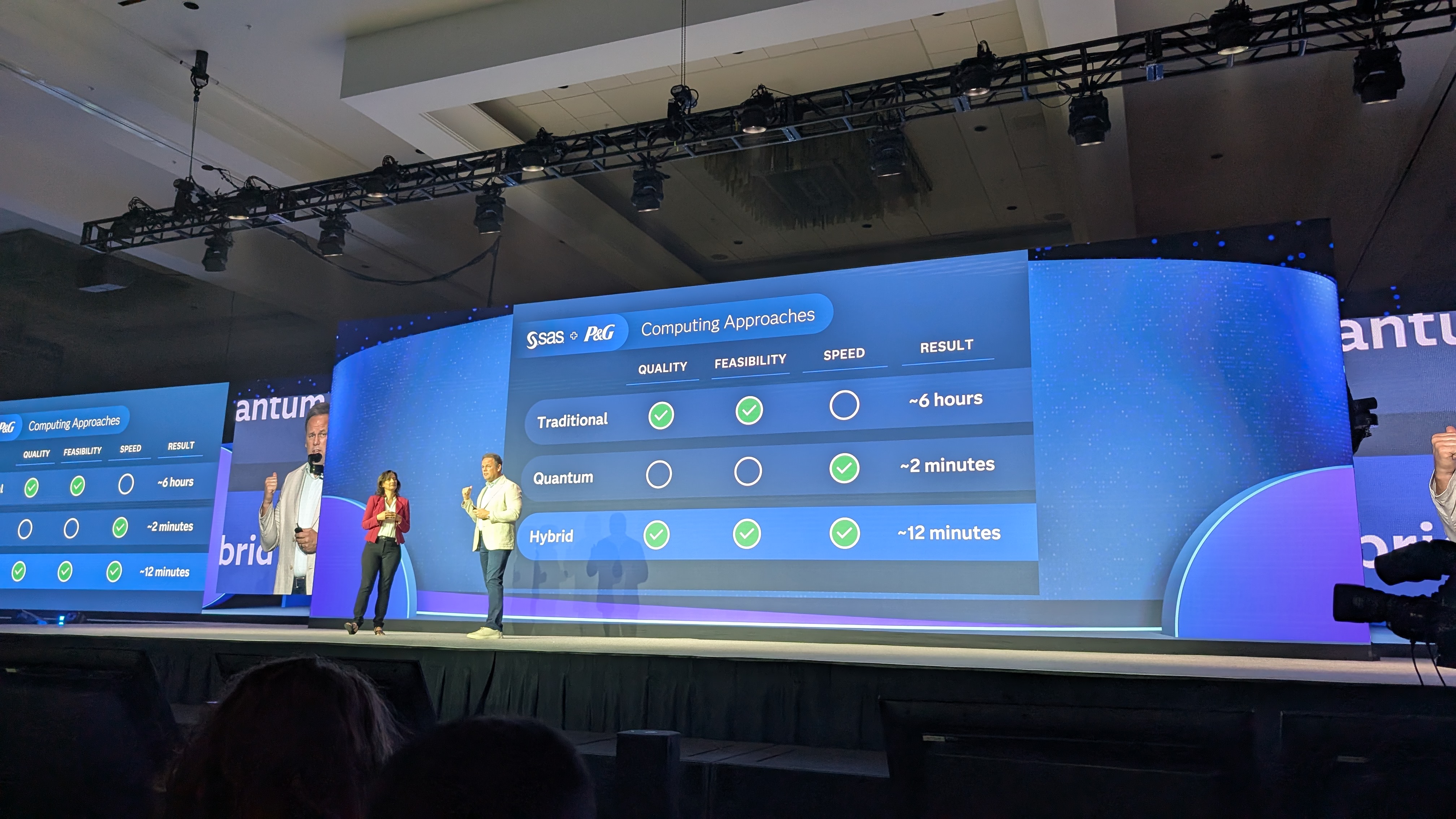
With that, we're moving onto some of the innovations coming to the SAS platform. To hear more, we've welcomed Jared Peterson, SVP Platform Engineering at SAS, to the stage.
"At SAS, we really understand how transformative Al can be. But we also understand the challenges that you face and the problems that you are trying to solve,” Peterson says.
“It's why we've created products that give you more data, more flexibility, and more control over how you get your job done whether you're a developer or a business decision maker, the things that you will see this morning can change the way that you work and the way that you run your organizations.”
We're starting off with a demo of Viya Workbench, the SAS cloud-based development environment. Peterson says SAS Viya Workbench was almost canned in the development phase but a developer “cornered me in a hallway” and urged him to consider the potential of the platform.
That developer was Joseph Henry, distinguished software developer at SAS, who's here now to show us SAS Viya Workbench live.
Henry says performing sentiment analysis, stemming, and limitization within Viya Workbench is straightforward, requiring just a few lines of code.
In his practical example, analyzing review data from Amazon products, Henry starts in Python and moves to R, showing the complexity of the process, then shows that the workflow in SAS is much simpler.
Peterson wants to know if more advanced models can be used in SAS Viya Workbench. Henry says you can, giving the example of the textbert model being used to score sentiment in text.
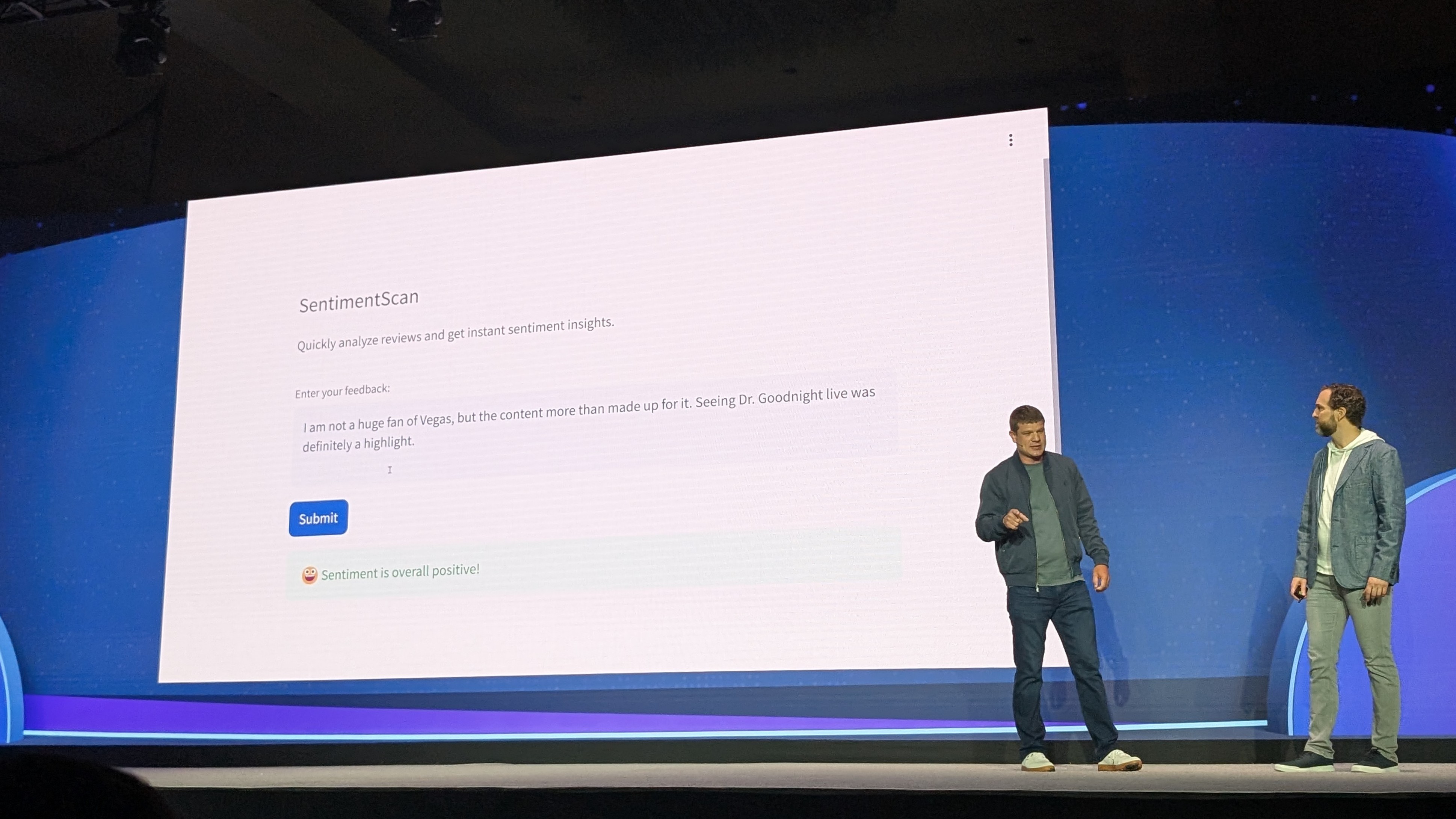
To round his time off, Henry shows off a simple app he created within Viya Workbench, to rate the sentiment of SAS Innovate 2024 attendee reviews.
We're talking about Data now, with Peterson underlining the importance of available data to power AI models.
Synthetic data is one route to meeting these needs, Peterson says, which is why SAS announced its synthetic data generation tool Data Maker last year.
Also in 2024, SAS acquired UK synthetic data startup Hazy. Here to tell us how its software has improved Data Maker is Harry Keen, founder and former CEO at Hazy and product evangelist at SAS.
To start, Keen says, users select their source data and let Data Maker automatically work out the structure of the data. In the latest version, Keen says, users can also highlight multi-table and time-series data.
Users can then select the specific model they want to use to generate the data, whether or not they want the enhanced privacy of differential privacy – "smart noise" added to the data to prevent it from being reverse-engineered – and then generate the data.
Once you've completed the initial model setup, Keen says, you don't have to ever again. Users across an organization can simply use the trained model to repetitively generate data going forward.
We're moving fast here in Orlando. Peterson notes that not everyone is a data scientist and this is where SAS Viya Copilot in Model Studio comes in.
Here to explain more is Ben Tomlinson, principal software developer at SAS. He demos how Viya Copilot can be used to build out a data pipeline, or explain an existing node.
In an example showing Viya Copilot's summary of a forest model, made up of decision trees, Tomlinson shows how a user can ask for more information on the node's receiver operating characteristic (ROC), using RAG to draw on enterprise documentation so the information is as accurate as possible.
Users can also ask Viya Copilot to 'improve' a specific node.
"By going beyond just answering questions and actually performing actions, SAS Viya Copilot unlocks the potential all types of users," Tomlinson says.
Peterson says SAS wants to inspire its users to be innovative and to empower its AI and modelling teams to cut down time consuming tasks.
Here to tell us more directly about AI is Manisha Khanna, senior manager product marketing at SAS and Udo Sglavo, VP Applied Al and Modeling at SAS.
Adopting AI can be challenging, the pair say, and this is where SAS' ready-made AI models come into play.
Sglavo says the models are lightweight and easy to implement, as well as built with specific industry applications in mind. They're also, he says, quick to initialize.
SAS has announced a range of industry-specific models and has more in the pipeline aimed at specific industries. Read more about SAS' new AI models in our dedicated coverage here.
SAS is using the session to stress how much it's already trusted, with decades of experience working hand-in-hand with protected industries. We're welcoming John Boyd, VP Solutions Product Management at SAS, onto the stage to tell us more about how it helps its customers address the biggest challenges.
"For decades, we've worked with domain industry experts to solve everyday business departments," Boyd says. "Think credit scoring, manufacturing, drug safety. We are working throughout your entire value chain to make your jobs easier."
Boyd adds SAS has been the "gold standard" for drug discovery for decades, was the partner of choice for banks in the wake of the Patriot Act, and a key player for vaccine development during the pandemic.
Banking customers rely on SAS Solutions predictive models for credit scores, fraud detection, and governance, he says.
For example, CNG Holdings was able to get over 90% of its new customers through the application process within 90 days, using SAS Solutions, a result Boyd says was previously "unheard of" for the customer. The work also reduced the financial solution provider's false positive rate to near zero and reduce fraud by around 30%.
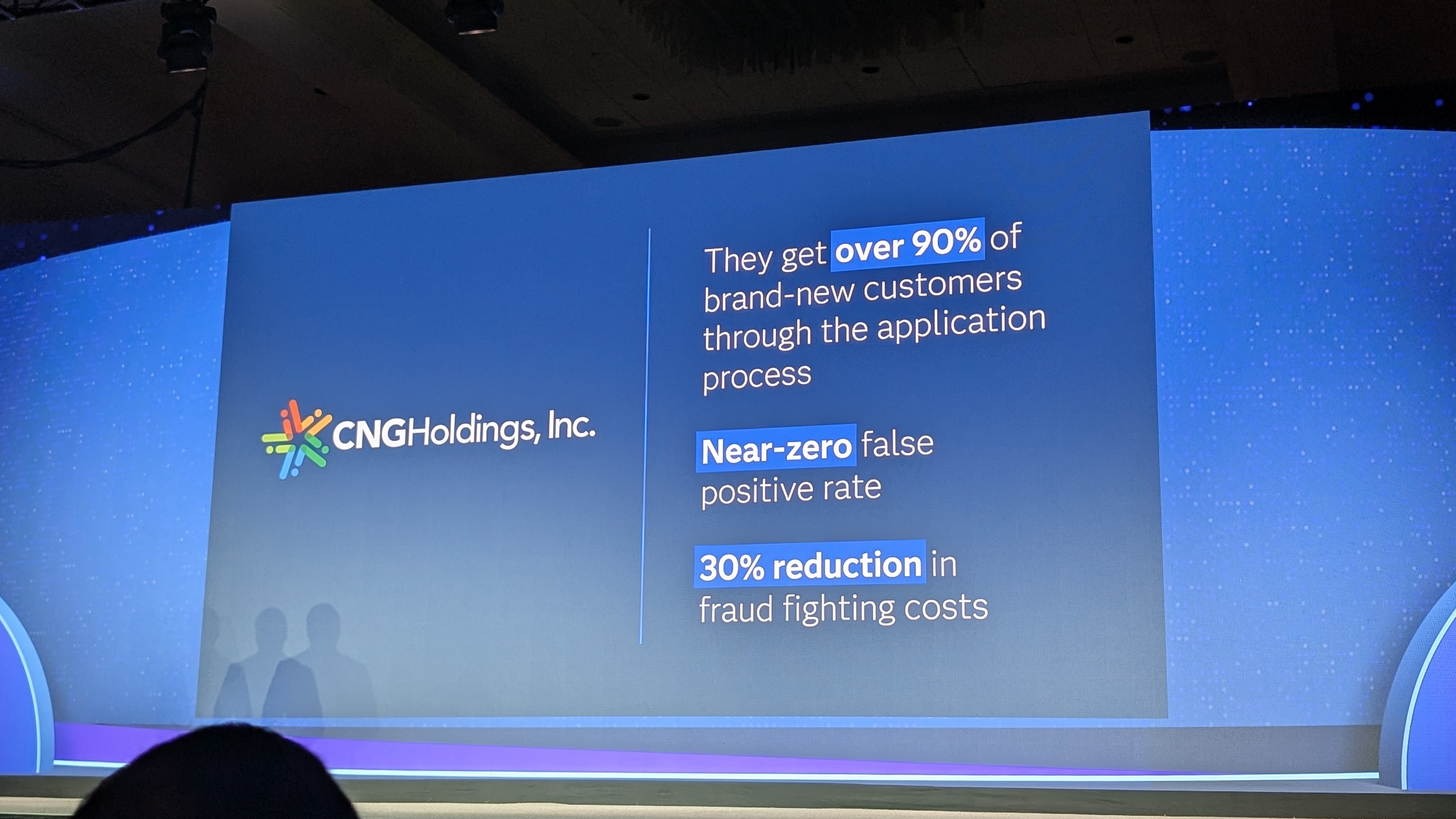
Fraud is a key focus for SAS, as we're now hearing from Stu Bradley, SVP Risk, Fraud and Compliance at SAS.
“You never know the face of a fraudster,” Bradley says, necessitating advanced technology and a need to get “inside the mind of a fraudster”.
To find out more, we're playing a game of 'Former Fraudster vs Fraud Fighter'. Our contestants are Tatiana Zambrano, head of fraud extraction at Truist and Frank Abagnale, bestselling author and subject of the movie Catch Me If You Can.
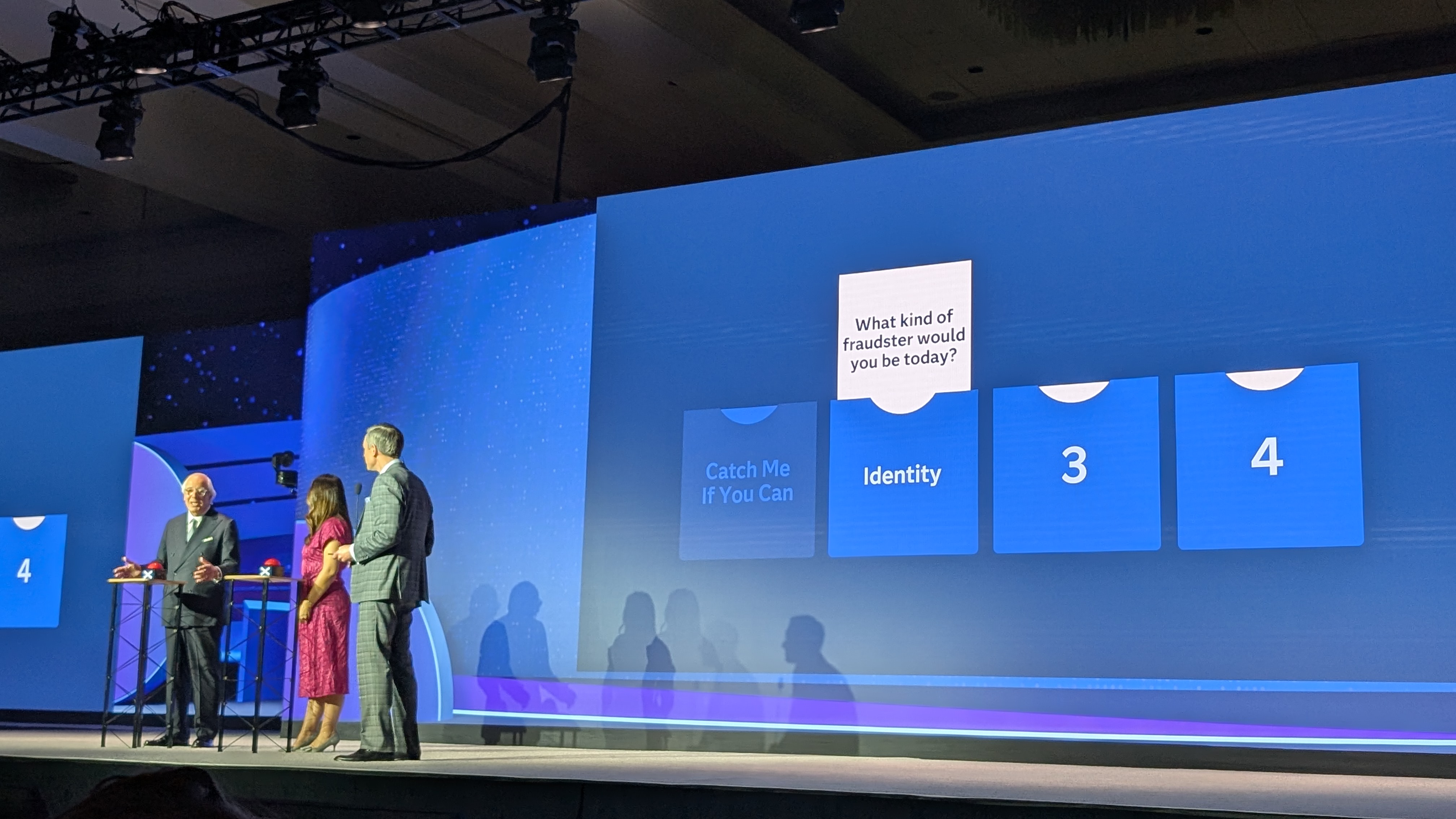
“50 years ago the fraudster was a conman acting domestically,” Abagnale says, adding that there was a chance for fraudsters to get emotional and decide to hold back from completely ruining victims.
“But today you’re dealing with someone thousands of miles away, they never see you, they never see your victim, you never see the perpetrator, so there is no emotion and they will steal everything from you.”
Zambrano concurs, adding that this is the reason for defense at scale.
"We're seeing a need to deploy technology that can outsmart them."
With the game in full swing, Abagnale says that attackers can carry out the kind of fraud he did with much more ease these days, given the technology at their disposal.
He adds that attacks will only become easier through technological innovation.
Asked about the future of fraud, Zambrano says that defense will rest on adopting and using generative AI faster than adversaries.
We're now handed back to Harris, who rounds out the opening session with a commitment to meeting customer needs.
"We are here to listen to your business goals and apply the right technology to you for you to achieve that," he says.
"And we are here to help you thrive in your role. SAS is building Cutting edge Al capability so you can deliver outcomes that outperform, so that you can gain a decision advantage."
And with that, the general session has come to a close. Stay tuned for all the latest from SAS Innovate 2025, right here on ITPro.
The sun has risen on Orlando once again and the second keynote is due to kick off in just under 30 minutes. We're expecting to hear more about agentic AI use cases today – off the back of a slew of AI announcements yesterday.
We're seated in the Orlando Ballroom, as the room fills up with freshly-caffeinated customers, partners, and staff (plus a select group of plucky technology journalists). Energy on the ground has been high throughout the event, with strong attendance expected for this session.
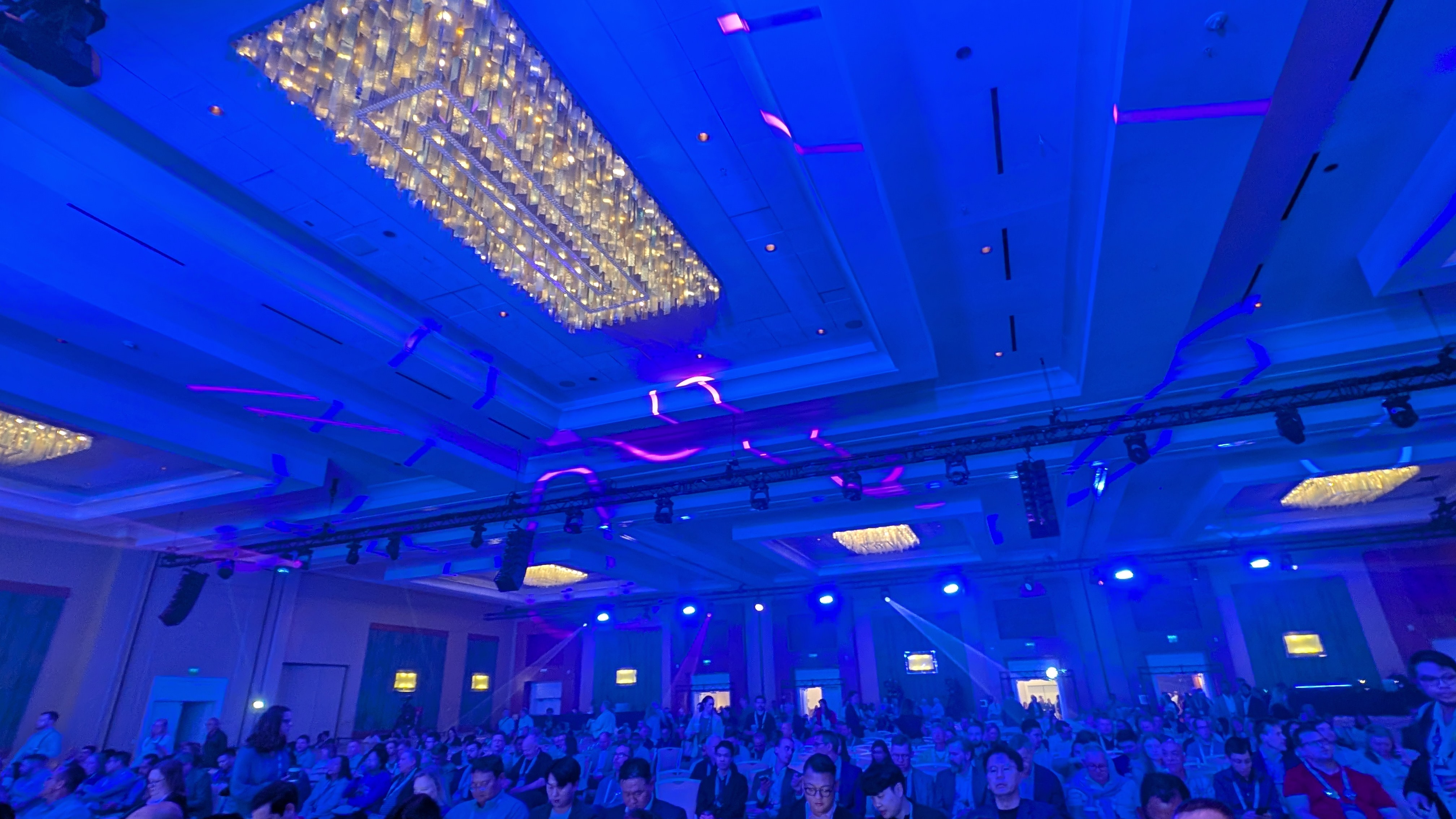
And we're off, welcoming back Dominque Moon, customer success manager at SAS, to introduce today's speakers.
Moon says that while day one focused on how data and AI can make business operations more efficient and powerful, today will center around making responsible and trustworthy AI.
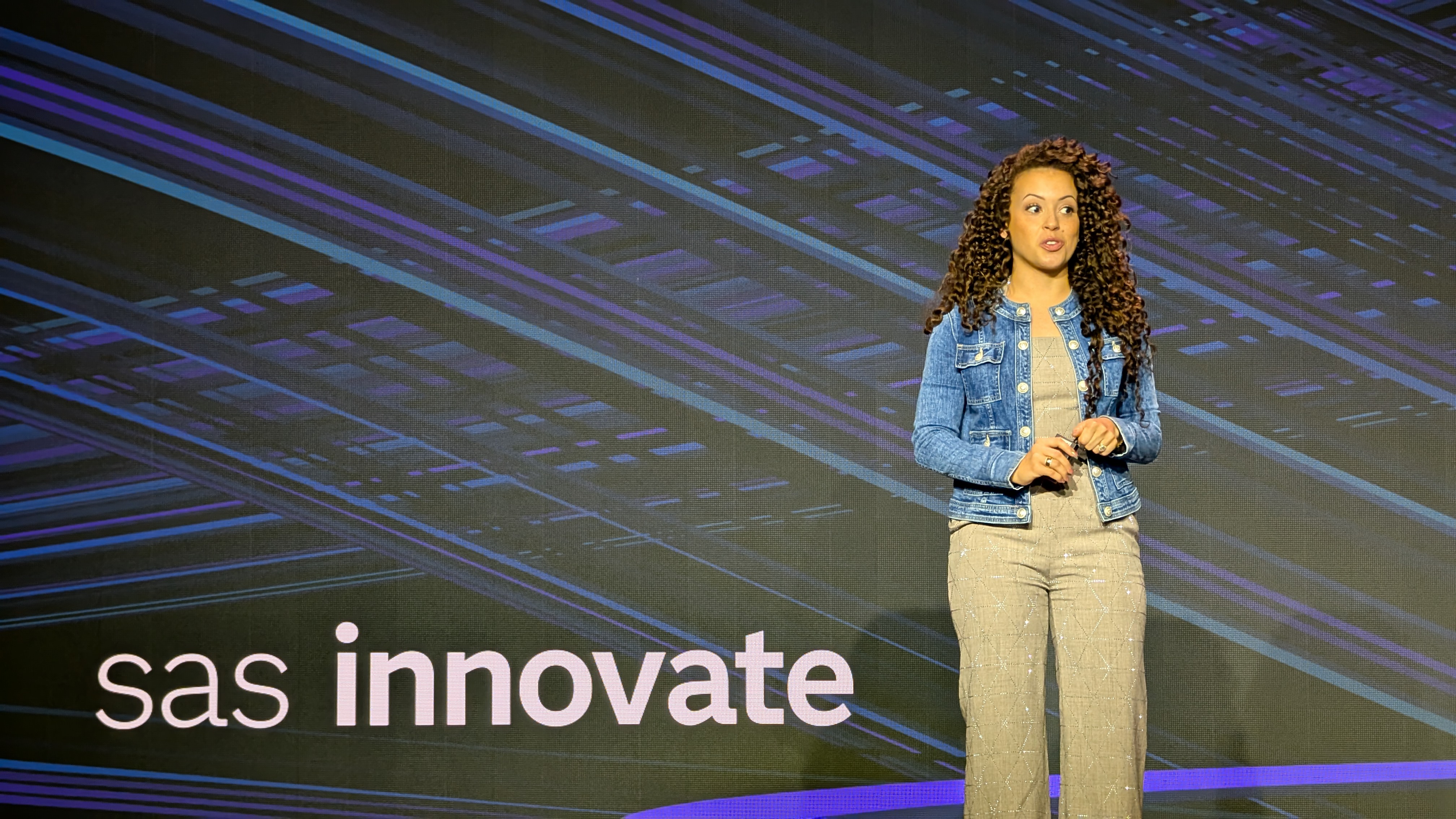
To start with, Moon says, we’ll be joined by Gavin Day, COO at SAS, to discuss SAS’ relationship with Microsoft. Next, we’ll be shown a discussion between Jim Goodnight, Co-Founder & CEO and Satya Nadella, chairman and CEO at Microsoft. After that, we’ll have some in-depth looks at responsible AI deployment.
With that out of the way – and having been treated to a sizzle reel showing some highlights from day one – we're welcoming Gavin Day, COO at SAS to the stage.
Day begins by expressing excitement for the upcoming Goodnight and Nadella conversation. He then pays tribute to SAS' customers, with whom he says he's lucky to be able to work.
Day says that these are "volatile and uncertain times – perhaps the most volatile we've faced in our career," a reference to recent economic upsets such as the US' tariffs.
Amid all that, Day says, SAS stands ready to support its customers. And in this role, he says, its work with partners is all important.
2025 marks the fifth year of SAS and Microsoft's strategic partnership, Day says, with a commitment to "push the limit of what's possible to drive the best decisions, and the best outcomes for you". With that, we're passing over to Goodnight and Nadella.
Nadella begins by saying Moore's law is now "in hyperdrive", with AI innovation happening at speed.
"The real trick", he says, "is to be able to parlay that advance in modern capability into actual useful products."
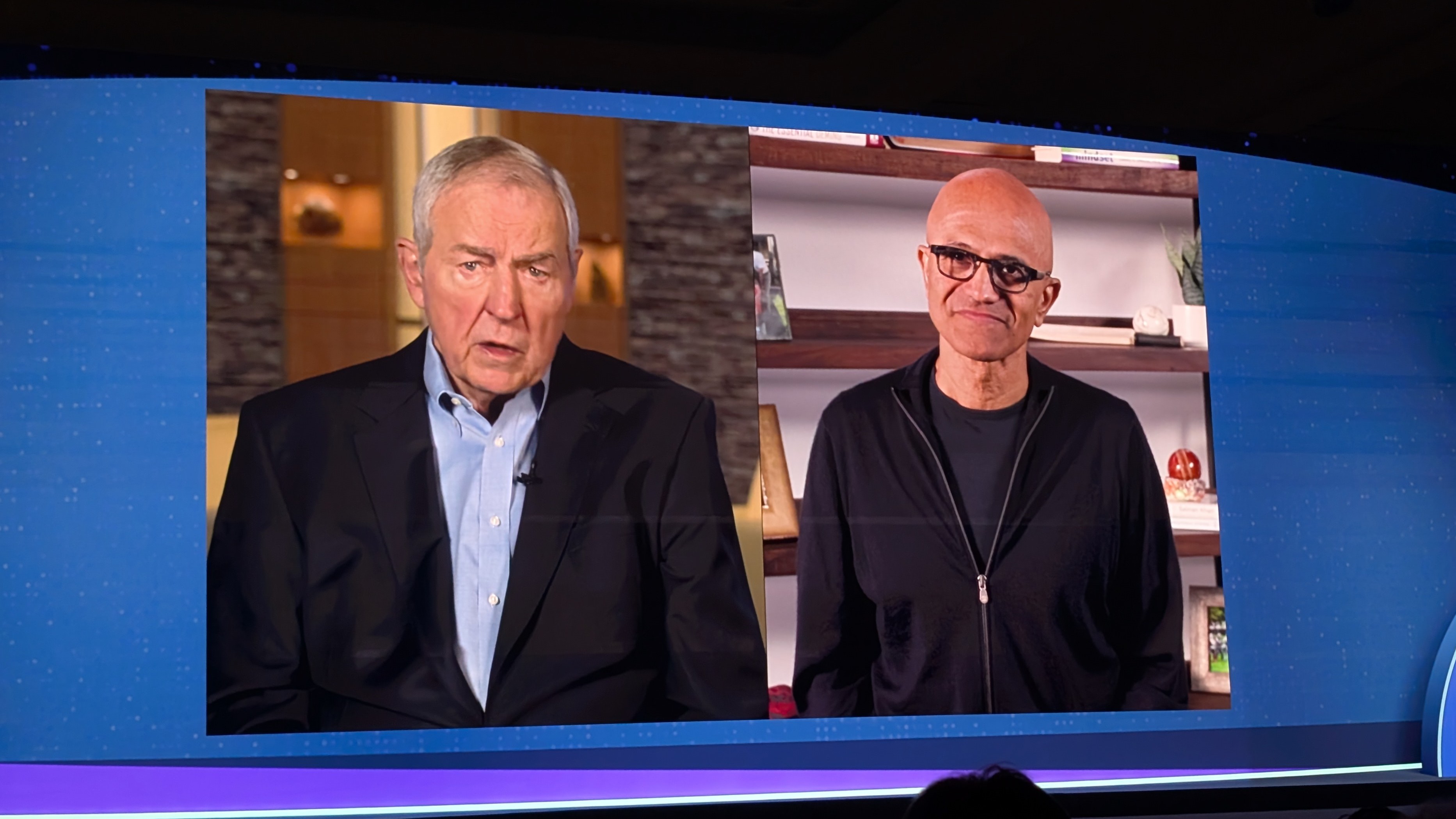
"The scale of data involved has also increased at an incredible speed, and the amount of information companies have to deal with nowadays must be met with technology that can handle the complexity and scale of these workloads," Goodnight says, noting that generative AI cannot meet all needs. He asks Nadella where he thinks we are on the curve of AI and how leaders can stay ahead.
Nadella agrees, noting that Microsoft's work with SAS is testament to the fact that while generative AI may be used to make a plan, for example, the execution can still be done with deterministic workflows, ML, and statistical models.
He adds that bringing SAS solutions to Microsoft Fabric is critical, and will help customers remove friction in their workflow and cut the time to deploy AI.
We're moving onto quantum now, with Nadella mentioning Microsoft's recent breakthrough with Majorana particles. He says that quantum computing will be necessary to properly simulate nature, even as AI is used as an "emulator" for nature.
"Going forward, whether it's computational chemistry, biology, or what have you, it will be truly accelerated with the combination of quantum and AI," Nadella adds.
Both leaders say they're honored to be working together, and with that we're handing back to Day.
Day says though it wasn't previously called 'decisioning', SAS has been a leader in using data and business rules to accelerate decision-making for nearly 50 years. In practice, this looks like helpijng banks prevent fraud, hotels to forecast demand, public sector organizations identify at-risk children and mitigate flooding, and empower pharmaceutical companies to bring drugs to market faster.
"Ultimately, it's the decisions that drive your organizations, not data," Day says, adding that trust is the most important thing for SAS.
Here to tell us more is Reggie Townsend, VP, Data Ethics at SAS.
Townsend starts by acknowledging that some of SAS' announcements have been complicated, not least quantum. So he's starting simple with the analogy of staring into a mirror – a simple object, that at one point in history was considered "a revolutionary innovation".
"Like those first reflective surfaces, AI is changing how we see ourselves and how we envision our future," he says.
When AI uses data, Townsend adds, it sometimes reflects ourselves with clarity and sometimes with distortion.
"So, when Al produces a biased result, it's not a technical failure, we should stop saying that," he says.
"What it's doing is it's showing us the biases and the beneficiaries that we've embedded in our cultural and our organizational practices."
Townsend says we all have a responsibility to be responsible innovators, from industry, to government, academia, civic organizations, and individuals. He urges the audience to consider whether we want the norms of the past century to drive the algorithms of the next century.
Townsend is digging into some of the numbers around AI governance now, with data showing leaders do want to be responsible AI leaders. To read more on this, check out our detailed coverage of Townsend on trust in AI.
Townsend advocates for 'response-ability', in which leaders predict and simulate harms, to get ahead of potential risks and improve AI oversight.
"The only thing better than a quick decision, is a decision you can trust," Townsend says.
Government has a role to play, Townsend says, and here to tell us more is Mubaraka Ibrahim, chief artificial intelligence officer & CIO at the Emirates Health Services, UAE.
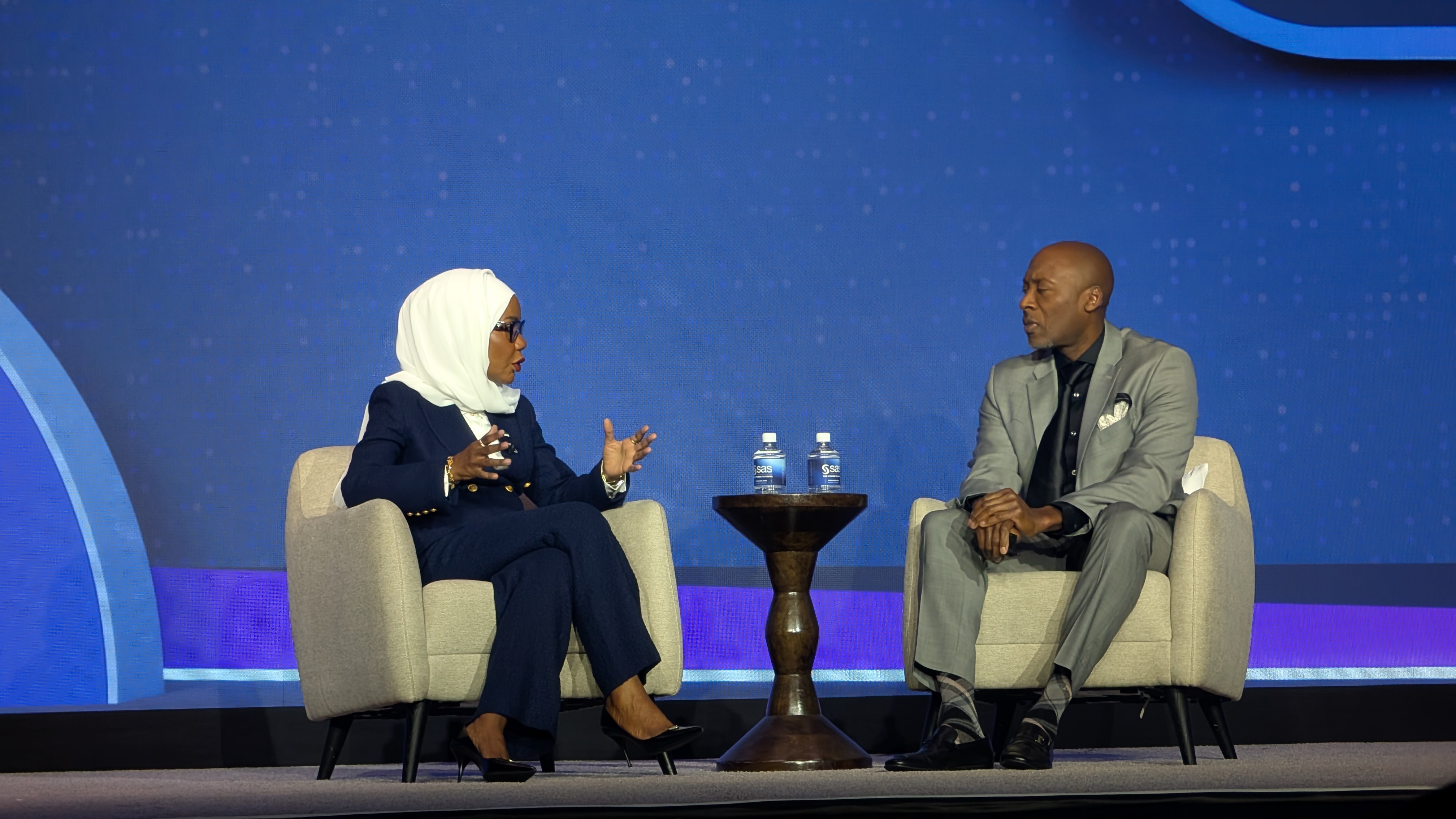
SAS has partnered with the organization, which Ibrahim explains is steaming ahead with AI adoption.
The UAE appointed its first AI minister in 2017, Ibrahim says, and has established a detailed AI 2031 plan. As part of this, the UAE government has now appointed 22 chief AI officers across all sectors, who work with the AI minister to collaborate on secure AI deployment.
EHS is looking to implement AI to improve healthcare outcomes, build trust in AI, and make it accessible to the population of the UAE. Ibrahim says it's already been shown to reduce provider burnout and cut costs, while improving patient engagement.
Internally, EHS has built more than 40 models for predictive analytics, having used these to forecast ICU mortality risks and model infections during the pandemic. It has also used machine learning to improve the connection between providers and patients.
We're now moving onto shadow AI, with Townsend stating that of the 58% of employees already using AI for work, 60% are doing so without company-approved tools. SAS knows governance is key to success, he says, and wants to "earn the right to help you with your approach".
Townsend is now handing over to Alyssa Farrell, director, Global Industry Strategy Health & Life Sciences at SAS, who will tell us about how ethical AI is reshaping healthcare.
Farrell begins by acknowledging healthcare data is incredibly sensitive, with organizations in the sector faced with the double challenge of innovating without compromising on responsibility.
SAS can help heathcare providers to analyze drug safety, run medical sumulations, and assess the cost of care. But trust is the number one factor here, she adds.
To give a real-world example, Farrell introduces a partnership SAS has established with two Dutch organizations: Erasmus University Medical Center (Erasmus MC) and Delft University of Technology (TU Delft).
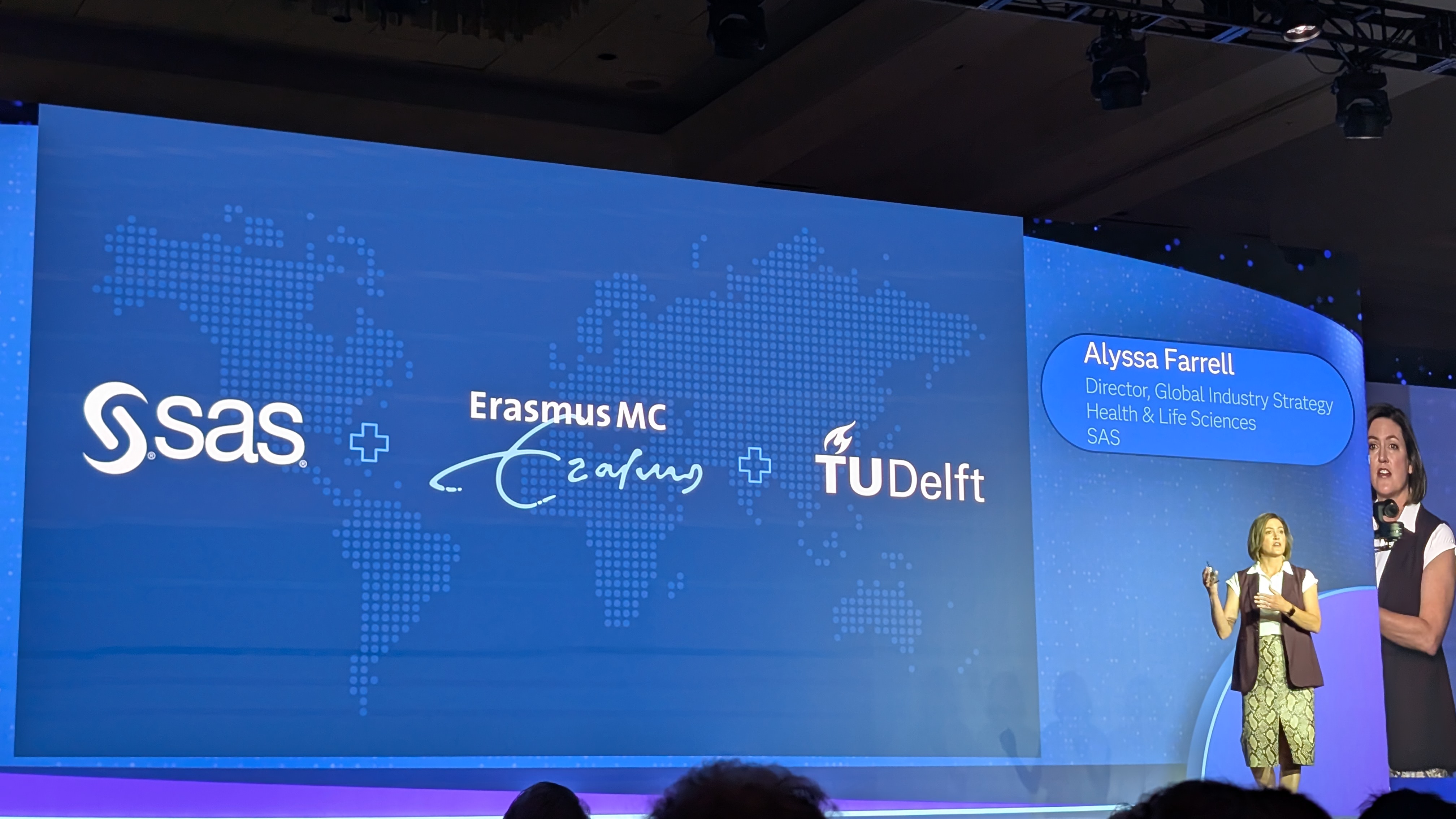
Together, they have launched Responsible and Ethical AI in Healthcare Lab (REAHL), to tackle the responsible use of AI in healthcare.
To tell us more, we're now hearing from Michel van Genderen, an Internist-Intensivist doctor at Erasmus.
Every organization and thus also every hospital always needs to know which models are currently in production, but maybe more importantly, what is their intended use," he says. With SAS and the World Health Organization, van Genderen says his team is helping to establish a registry to track deployment and ensure models follow best practice when it comes to transparency and ethics.
Bias is also a critical issue, van Genderen says, with SAS helping to identify where data changes could negatively impact model trustworthiness. For example, he says, two years ago his team tested a model that would determine when it was safe to discharge a patient following major oncology surgery, but found a standard hospital IT update shifted the datasets that fed directly into the model's decision. It was lucky, he adds, that it was only a controlled test and not a live product.
SAS ModelOps helps deliver this real time oversight and model assessment, he adds.
One of van Genderen's major tasks right now, he says, is to help his peers adopt AI and make meaningful change with it. A recent success, he says, was the introduction of a dashboard to track decision-making for patients on mechanical ventilation, care in which his hospital specializes. The dashboard drove a marked improvement for patients, he says, and also provided doctors and nurses with clear feedback.
Whether it's patients or customers, SAS wants attendees to know it's focused on positive outcomes. Here to tell us more is Kate Parker, senior director, Customer Intelligence Practice at SAS.
"Your most powerful asset is your data," says Parker. "And SAS Customer Intelligence Solutions provide you with the ability to connect directly to your data environment and turn that data into action. Because data is the foundation for decisions that are made to positively impact the customer experience."
We're moving quick today, with many customers coming onstage to give practical examples of SAS in use. Here to tell us more about customer experience is Bennett Fox-Glassman, SVP Customer Journey at Macy's.
Fox-Glassman says Macy's is focused on the customer experience and improving enagement, which leads to profit and sustainable growth.
It's all about knowing their customers, Fox-Glassman says, while keeping it natural.
"Nobody ever comes up to me and says, 'Hey, l'd like more personalization', right? That's a term we use as data individuals, as marketers, but customers do come, and they ask for context," he says.
In practice this means making sure you can recommend relevant products to customers, send them relevant marketing emails, and ensure every interaction is right for each specific customer.
Fox-Glassman adds that Macy's is excited to drive business outcomes with its investments in technology, but urges all firms to be "extraordinarily use-case-driven".
This circles back to trust, he says, in which in Macy's case means earning brand trust from its customers every day.
The organization is still exploring generative AI, Fox-Glassman says, giving the example of a terrible output he recently got from an AI agent. For the moment, Macy's is mainly using AI internally as it gets to grips with how it can deliver the most value.
Parker's moving on now, noting that many data scientists spend 80% of the time preparing data and only 20% performing analysis – an issue SAS is working to fix.
"Providing marketers with the solutions they need, to lighten the lift of IT resources drives tremendous efficiencies across the organization and will ultimately help improve your bottom line," she says.
We're now being shown a demo, in which Parker is able to use marketing analytics within SAS Customer Intelligence 360 to track annual subscription churn. She can raise insights into the most common attributes of customers prone to churn, to better target them with marketing and improve customer retention and satisfaction.
Within the platform, Parker can also see metrics driven by AI analytics, with recommendations for improving the customer experience. For example, in the demo the platform recommends changing the eligibility for an organization's car loan approvals, as the model has identified the current guidelines are harming sales.
We're now handing back to Day, who states that agentic AI has major potential but only with strong framework in place.
Without this, he says, organizations will be impacted by all the downsides of LLMs such as hallucinations and otherwise unpredictable behavior.
Here to show how SAS helps leaders orchestrate agents is Diana Maris, product manager for Intelligent Decisioning at SAS.
Using an orchestration agent which decides which agent to call for which task, Maris says, a user can use natural language to ask for detailed data breakdowns. An example user, Sarah, asks for details on customer complaints, triggering a complex series of agents running on decisioning frameworks, to draw together the data and present it in plaintext.
The orchestration agent can call a series of specialized agents, including a Complaints Agent, Churn Agent, or Policy Agent.
Users can review the decision trees the agents follow, to ensure they fit the expected outcomes and ensure organizations aren't deploying agents they can't predict.
"You are able to stress test your agents against dozens of scenarios, making sure you validate their performance as well as the path the data takes through the decision phase, ensuring full trustworthiness and confidence before the agents make it into production and go live," Maris concludes.
To summarize the event's key themes, we're back to Day.
Day says the AI journey is simply a continuation of the mission SAS has been on for nearly 50 years and is only becoming stronger through its collaboration with partners such as Microsoft.
And with that, Moon is back onstage to officially announce the second day's proceedings have begun. Stay tuned for more analysis from SAS Innovate 2025, right here on ITPro.
